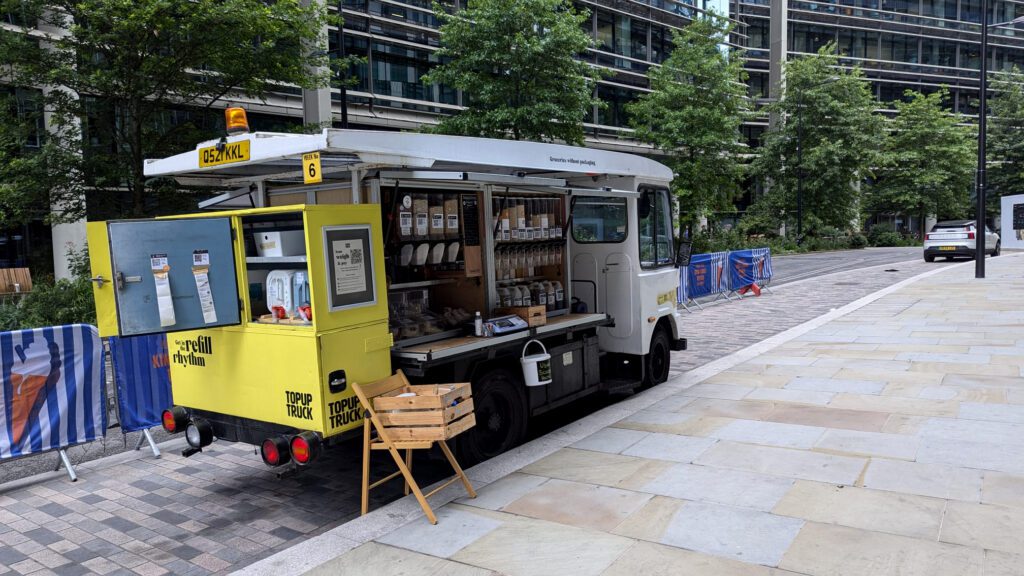
Valuable new research into reuse and refill has been published by mobile refill service providers TOPUP TRUCK and the University of the Arts London (UAL), following a research and development project funded by UK Research & Innovation’s Smart Sustainable Plastic Packaging (SSPP) Challenge.
Refill has long been positioned as a solution to excessive single-use plastic packaging in the consumer supply chain but despite growing interest, mainstream adoption continues to be challenging. For refill to truly take hold, services need to match the convenience and clarity of traditional retail.
When Ella Shone founded TOPUP TRUCK in 2020, converting an old milk float into mobile refill service in East London, it was built on the belief that proximity to refill services would encourage people to shift from large, plastic-heavy supermarket shops to more regular, sustainable ‘top-ups’ of food and household products.
“I found that as someone who is interested in sustainability, I wasn’t finding the time to get to the refill shop, so I thought ‘what if the refill shop came to me?’”, she explains.
Three years on from its inception, TOPUP TRUCK secured the funding from the SSPP Challenge to undertake user-centred research to improve its mobile refill service in partnership with design researchers from UAL. The team applied a behaviour-led, user-centred design approach to uncover what motivates or deters people from refill shopping and how to increase adoption. The two-stage research project explored:
- the barriers to and motivations for using TOPUP TRUCK; and
- opportunities for improving the customer experience and driving habitual use of the service.
The research has highlighted that while sustainability is a motivator, customers are ultimately driven by convenience, product clarity, and value. Using these insights, the team has introduced a range of improvements, including a digital platform to streamline the process, better product information, clearer signage, and more intuitive product organisation on the truck itself. Every detail, from a more efficient weighing and payment system to a well-placed bag hook, was designed to reduce friction and improve customer experience, using a ‘marginal gains’ approach.
“The increased customer satisfaction and growth which has followed month-on-month after implementation demonstrates that thoughtful design, rooted in user behaviour, can help bridge the intention-action gap and can help consumers build a sustainable ‘Refill Rhythm,” says Ella.
The research report, which can be accessed here, identifies 10 themes that can help others to understand refill behaviours and build effective solutions.




